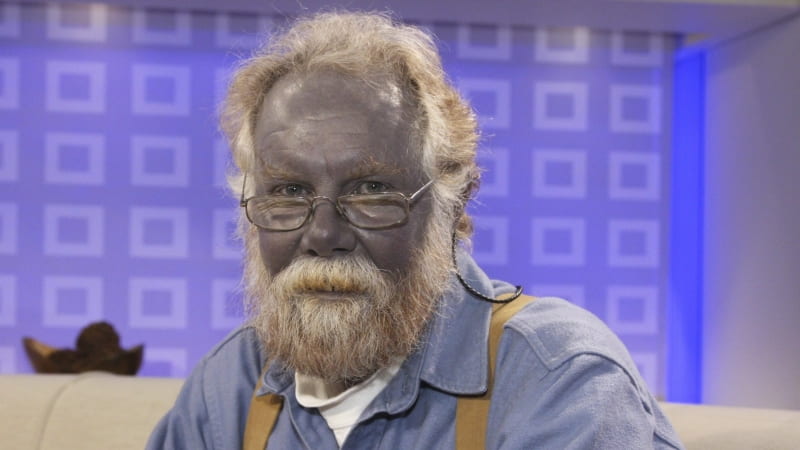MIRROR, MIRROR ON THE WALL, WHO’S THE BLUEST OF THEM ALL?
By: Carolyn Wilke

I recently helped polish silver for a fancy dinner party. While I rubbed purple-gray paste over the tines of the forks, feeling a little like a maid in Downton Abbey, I pondered silver’s chemistry.
After all, I research the chemistry of silver released into the environment due to human activity. Working in the kitchen, I felt strange handling silver without my lab coat and gloves. In the lab, we wear protective gear and treat silver as a hazardous heavy metal.
And silver is potently toxic—to microorganisms. Its toxicity stems from its chemical resemblance to copper. Copper and silver have the same distribution of electrons in their outermost “shell”. Similar electron distribution means similar chemical properties — namely how they bond and react with other elements — which allows silver to act like copper’s imposter in some chemical reactions. While copper is an important biological building block in proteins and enzymes, silver has no known biological purpose. Since silver “looks” like copper, it can bind to these enzymes and DNA in copper’s place, damaging them, and ultimately killing the bacteria.
Because of this antimicrobial action, silver appears in many consumer goods, often as nanoparticles: tiny particles of metallic silver used in fabrics or embedded in plastics. These silver nanoparticles are one source of silver contamination to the environment. Others include electronics and photographic processing and silver that occurs naturally. In fact, low levels of silver contaminate the food we eat, the water we drink, and the air we breathe.
This environmental silver exposure isn’t toxic to humans because it takes a pretty high dose to poison us. To contract silver poisoning, toxicologists estimate that you would need to ingest around 0.105 g of silver ions per kg of body weight. For me, that works out to around 7.5 grams of silver consumption. This toxicity standard suggests that I could eat a small piece of jewelry’s worth of silver. If I did, I would live. But there would be one surprising consequence.
High-level or long-term exposure to silver causes a disease known as argyria. Argyria permanently turns the skin a shocking shade of blue or gray. While this condition typically occurs because of silver ingestion, it can also result from the overzealous use of silver-containing nasal sprays and eye drops (neither of which is recommended by the FDA). Famously-blue Paul Karason was known as “Papa Smurf” (photo above). He developed his azure hue from drinking a concoction of silver nanoparticles, a practice which he thought would improve his health.
Although records mention argyria as far back as the 1700s, the chemistry of silver nanoparticles in the body and how they turn skin blue was not well understood until recently.
When a person ingests silver nanoparticles, the particles dissolve easily in their stomach acid, releasing silver ions. The freed silver ions can then bond with the sulfur and selenium found in the body. The resulting compounds are transported throughout the bloodstream and some migrate to the outer layers of the skin.
When light shines on the skin, the light’s energy prompts nearby molecules to donate electrons to the silver compounds. These electrons transform the silver compounds into new silver metal nanoparticles.
This process — transforming silver compounds to silver metal nanoparticles through light exposure — is essentially “photography” in the skin. In old-fashioned photography, exposure to light transforms silver compounds into silver metal particles, which produces the image on developed film. In the case of indigo-hued skin, the blue color results because “intradermal” (inside the skin) silver nanoparticles change the way the skin absorbs light.
Slowly over time, the metallic nanoparticles once again react with sulfur and selenium in the body, stabilizing the nanoparticles. The cycle of silver’s journey of transformation through the body ends here, as insoluble, stable silver compounds permanently embedded in the skin.
Many scientists believe this strange ability to pile up non-toxic silver-containing nanoparticles in our skin saves humans from the dangers of toxic silver exposure which kill microorganisms. While we’re exposed to minute amounts of silver every day, as were the silver-spoon-fed gentry of the past, our bodies process silver in remarkable ways. Thankfully, it’s not enough for me or the Earl of Grantham to turn blue anytime soon.
